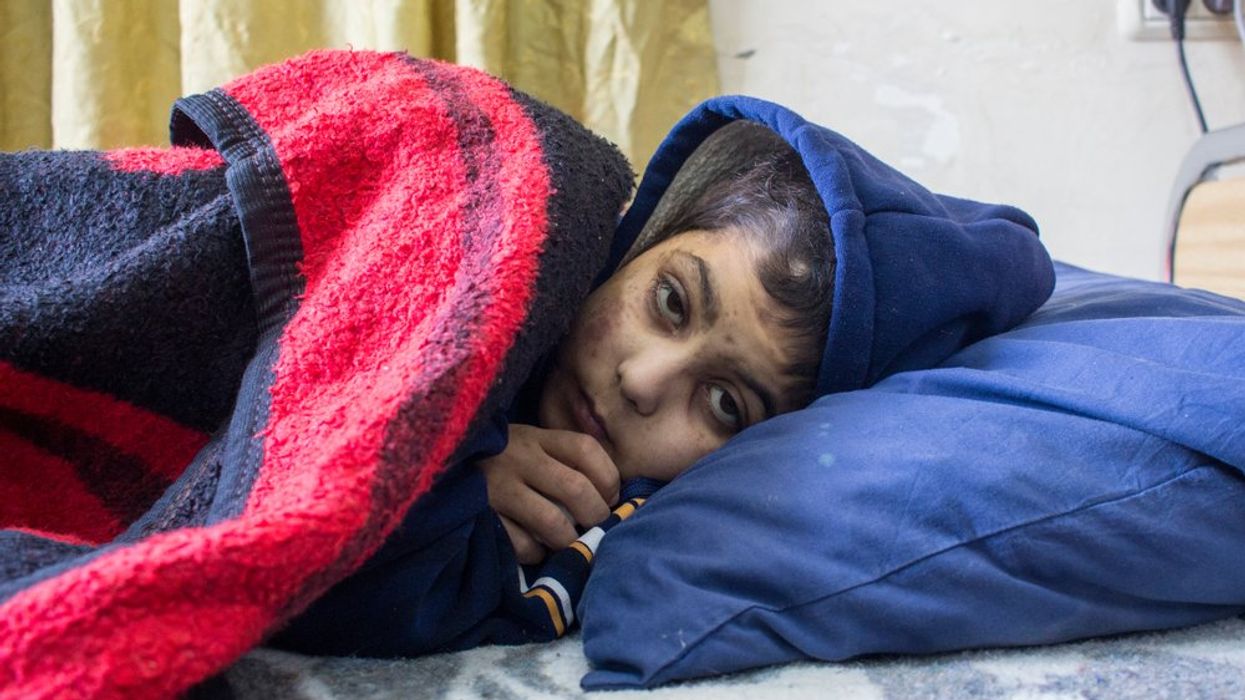(CNN) — As the Israel-Hamas conflict continues, there’s growing concern about how the situation may raise the risk of disease and illness in Gaza.
There could be more deaths in Gaza from disease and a broken health infrastructure than from bombs and missiles, the World Health Organization has warned.
“Eventually, we will see more people dying from disease than we are even seeing from the bombardment if we are not able to put back [together] this health system and provide the basics of life: food, water, medicines and of course fuel to operate the hospitals,” WHO spokesperson Margaret Harris said Wednesday.
In most wars, many more people become ill and die from the indirect health impacts of conflict than from the direct effects of bombs, bullets and other weapons, said Dr. Barry Levy, an adjunct professor at Tufts University School of Medicine and author of “From Horror to Hope: Recognizing and Preventing the Health Impacts of War.”
These indirect impacts are mainly caused by the destruction of civilian infrastructure, which provides food, water, shelter and health care, as well as by forced displacement.
Indirect health impacts include cases of infectious gastrointestinal diseases such as cholera, mainly due to reduced access to safe water, and contagious respiratory disorders such as measles, tuberculosis and Covid-19, partly due to crowded living conditions. The reduction of public health services, such as immunizations and actions to control disease outbreaks, as well as increased malnutrition can also contribute to the occurrence and severity of infectious diseases.
“Worsening of diabetes and chronic heart and lung diseases occurs during war because of reduced medical care and less access to basic medications. Maternal and infant mortality increase because of reduced preventive services and medical care. And war has profound effects on mental health, including depression, PTSD and suicide,” said Levy, who has been studying the health effects of war for more than 30 years.
“I agree with WHO that humanitarian assistance must continue to be provided,” he said. “But health and peace are intertwined. People’s health and security cannot be restored until the violence ends and steps are taken toward a just and sustainable peace.”
A growing and deadly risk
Conflict can cause more death from disease or other indirect health impacts than from trauma-related injuries, said Rebecca Katz, professor and director of the Center for Global Health Science and Security at Georgetown University.
“Infectious disease and other health challenges are always a concern in conflict regions,” Katz, who is not involved with WHO, said in an email. She added that conflict affects overall access to care and medications, so it may be difficult for people to find care for conditions that might otherwise be treatable.
“If you think about noncommunicable diseases, often care is disrupted during conflict, so you may see increases in people not getting care for things like cancer, or renal failure. Or people might have challenges accessing maintenance drugs for conditions like hypertension. And the experience of conflict adversely impacts mental health,” Katz said.
“If the conflict impacts access to safe water, then there may be challenges with waterborne diseases,” she said. “If it is difficult to maintain sanitation, then the population is at risk of multiple other diseases associated with challenges related to safe drinking water and functional wastewater systems.”
Since early November, WHO officials have warned about a rising risk of disease spread in Gaza as health services, water and sanitation systems have been disrupted.
“Given the living conditions and lack of health care, more people could die from disease than bombings,” WHO Director-general Dr. Tedros Adhanom Ghebreyesus wrote Wednesday in a post on X, formerly Twitter.
He added that 1.3 million people are living in shelters in Gaza and overcrowding and that a lack of food, water, sanitation, basic hygiene, waste management, and access to medications are resulting in abnormally high cases of illness.
On Friday, the United Nations Relief and Works Agency for Palestinian Refugees (UNRWA) reported a hepatitis A outbreak in one of its shelters, according to the United Nations Office for the Coordination of Humanitarian Affairs, which also said that overcrowding and poor sanitary conditions at UNRWA shelters in the south have led to “significant increases in some communicable diseases and conditions.”
Tedros said in his Wednesday post that there were at least 111,000 cases of acute respiratory infections; 12,000 cases of scabies; 11,000 cases of lice; 75,000 cases of diarrhea, of which about half are under the age of 5; 24,000 cases of skin rash; 2,500 cases of impetigo; 2,5000 cases of chickenpox and 1,100 cases of jaundice, among other health conditions.
“Damage to the most critical infrastructures for human health – hospitals, sanitation facilities, and clean drinking water – have created all the required environments for deadly disease outbreaks,” Ubydul Haque, an assistant professor of global health at Rutgers Global Health Institute, wrote in an email.
“Since the hospitals are not functioning, there is no way to detect the outbreaks, and there is a high risk of rapid disease spread among the displaced population. In this situation, the risk of death due to disease is much greater than the risk of death due to bombardment,” said Haque, who is not involved in WHO but has studied infectious disease, conflict and war.
“Other physical health risks are breathing in smoke and fumes from open burn pits, sand, dust, particulate matter, cardiovascular diseases, and stroke. Continuous public inhalation of toxic materials can affect the nose and lungs and can even lead to cancer in the long run,” he added. “There are also health risks among pregnant women, such as preterm labor, preeclampsia, miscarriage, premature births, and newborn complications.”
During the Israel-Hamas conflict, maternity care facilities have been affected by Israeli airstrikesdue to evacuations, power outages, and a shortage of medical supplies. In November, 31 newborn babies were evacuated from Al-Shifa Hospital in northern Gaza, alongside six health workers and 10 staff family members, according to WHO, which reported that two other babies died the day before the evacuation.
Doctors who were still at the hospital at the time could not treat patients due to heavy shelling. Fuel shortages and a lack of electricity meant they were unable to run incubators for the babies. ICU patients and several neonatal babies in Al-Shifa died around that time.
CNN’s Martin Goillandeau and Eleni Giokos contributed to this report.
The-CNN-Wire
™ & © 2023 Cable News Network, Inc., a Warner Bros. Discovery Company. All rights reserved.
Israel resumes bombing in Gaza

Video Source: Advocate Channel
- Disabled Palestinians Struggle to Survive in Gaza: 'Isolated From the World' ›
- Social Media Sites Aren't Pushing Pro-Palestine Content — There's Just More Users Posting It ›
- Here Are Ways You Can Help Palestinian Civilians That Aren't Just Donating ›
- Queering the Map in Gaza: LGBTQ+ Palestinians Pay Tribute to Deceased Loved Ones ›


















































